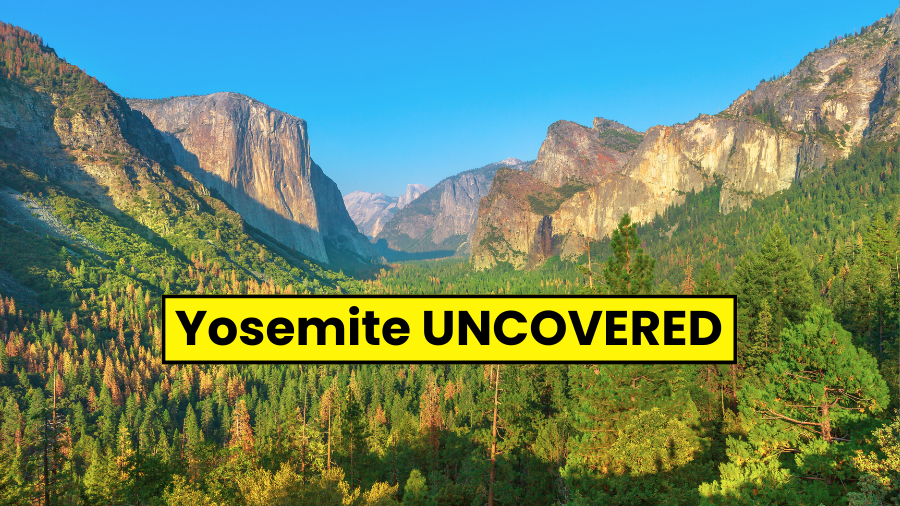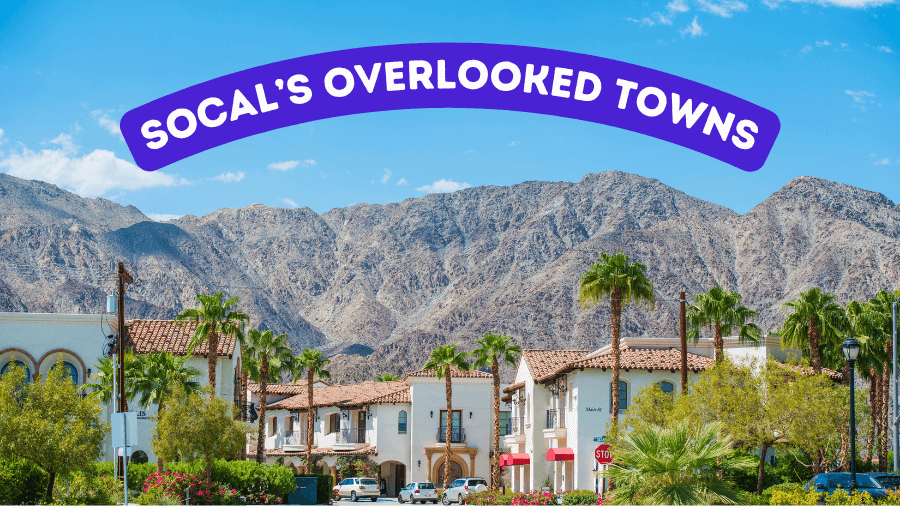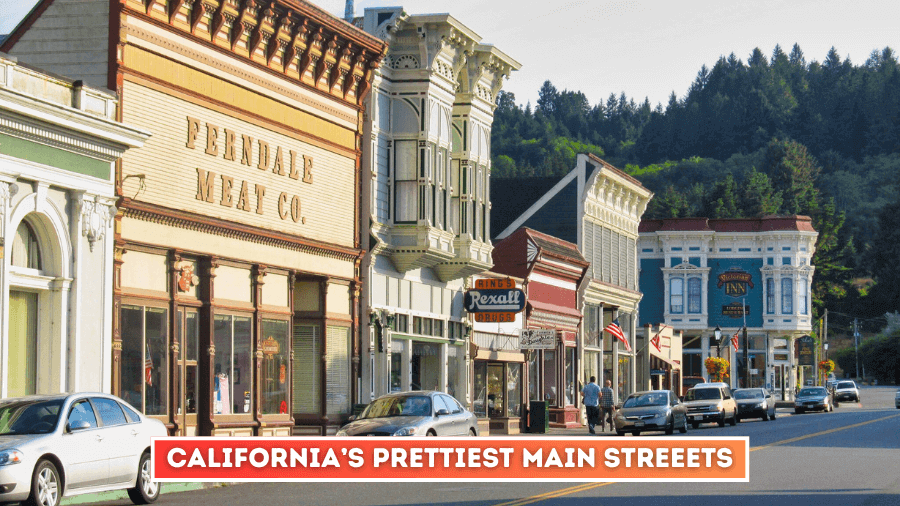You think you know Yosemite?
Think again. ❌
This guide cracks open the secrets of one of America’s most loved national parks.
There’s almost certainly something you didn’t know about Yosemite in this guide.
Discover the best things to do, find the best spots for stargazing, and more.
We’ve got the insider tips to elevate your adventure.
Ready to explore Yosemite like never before?
Let’s start off with an ultimate list of things to do to whet your appetite.
🚨This guide is a biggy so feel free to jump around using the table of contents just below this piece of text. Or just bookmark this page to read later.
26 Things You NEED To Do in Yosemite
1. Hike to Half Dome
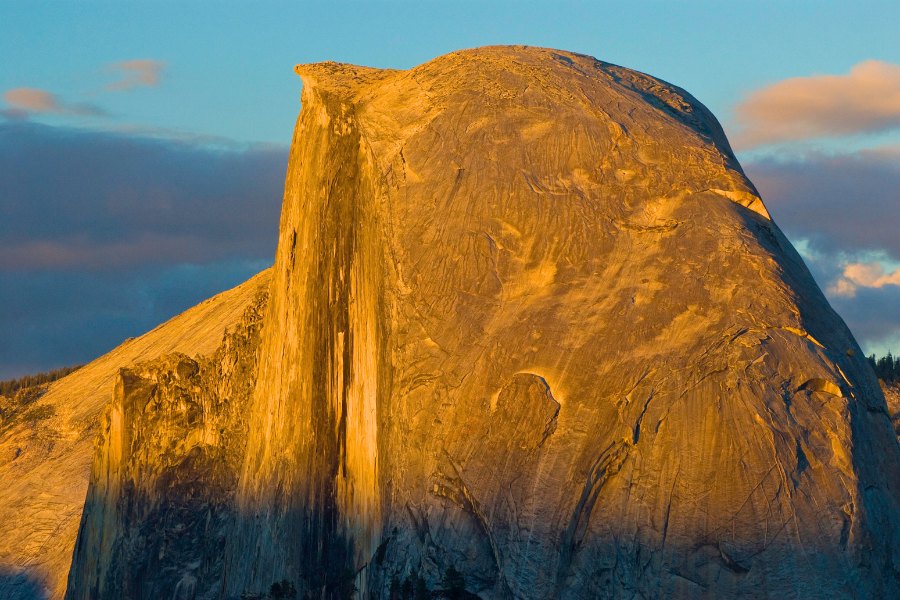
A challenging hike of the most iconic place in Yosemite.
Rising 5000 feet above Yosemite Valley you’ll be rewarded with incredible views, but permits are required for the final section.
2. View Yosemite Falls
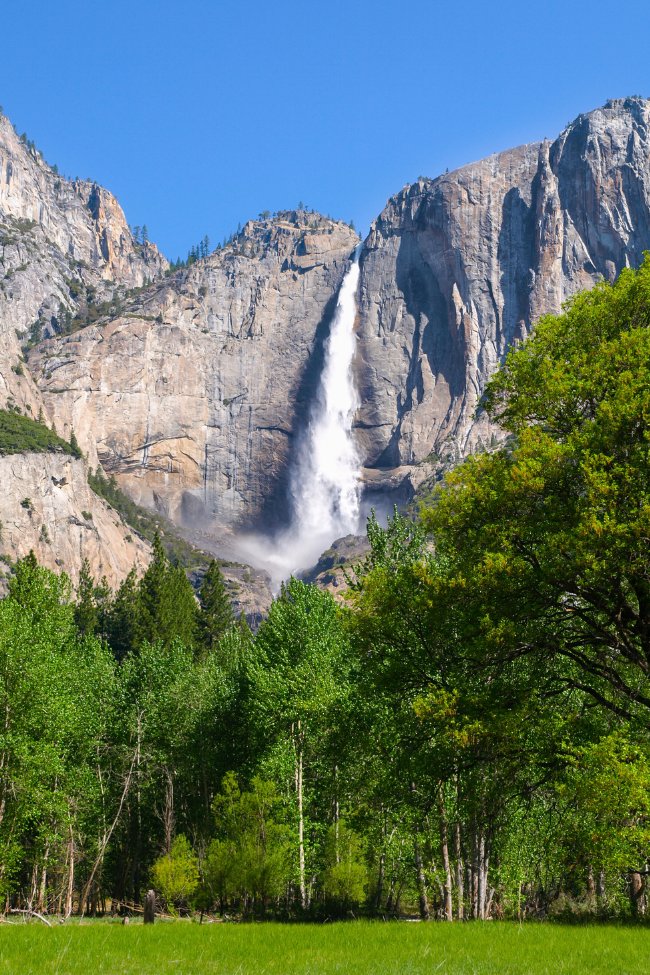
See North America’s tallest waterfall in all its glory.
It’s especially powerful in late spring (May) when melted snow adds to the flow of the waterfall.
You can see Yosemite Falls from different places around Yosemite Valley, especially around Yosemite Village and Yosemite Valley Lodge.
The Lower Yosemite Fall Trailhead provides an easily accessible trailhead that takes you on a trail with amazing views of the falls.
3. Walk among Giant Sequoias (including Grizzly Giant)
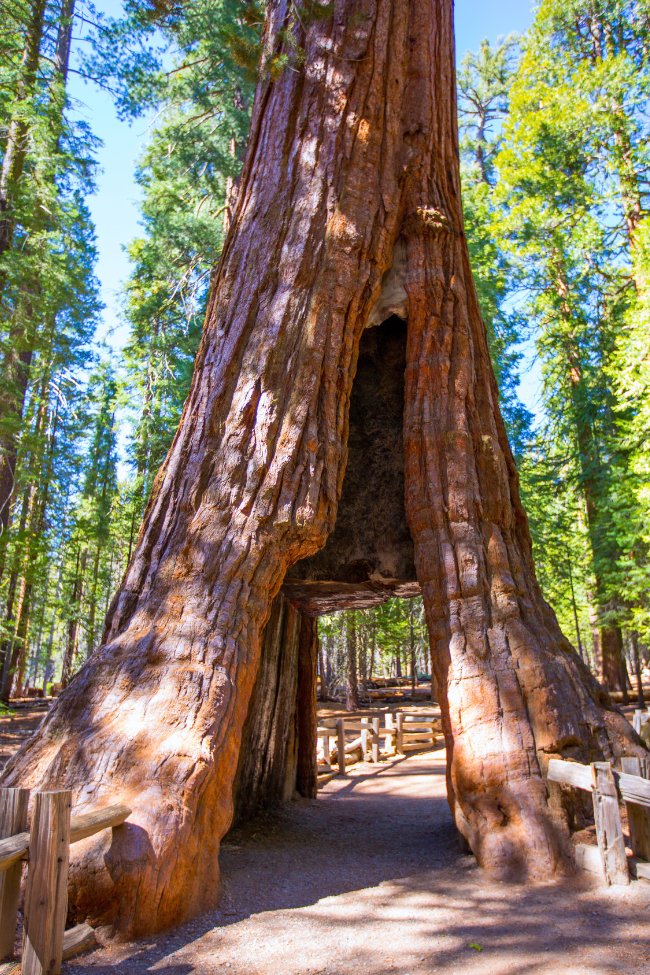
Visit Mariposa Grove to see some of the world’s largest trees.
It’s home to the largest grove of giant sequoias in the park, and it’s in the southernmost part of the National Park.
4. Do the popular Mist Trail hike
The Mist Trail takes you to Vernal Falls (317-foot) and Nevada Falls (594-foot), both of which are stunning waterfalls.
Here’s what Vernal Falls looks like.
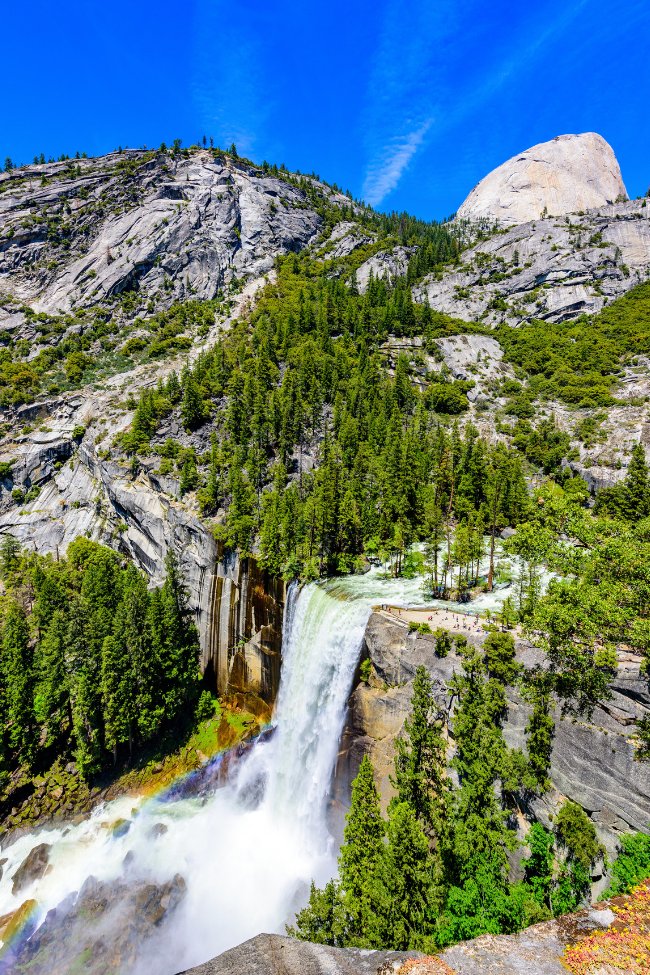
5. Drive Tioga Pass
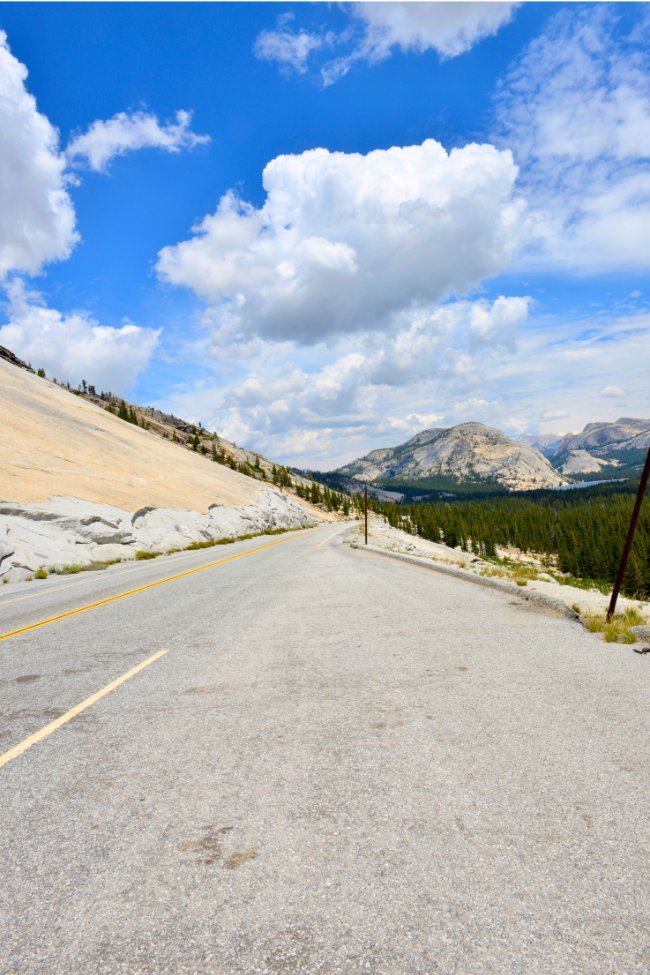
Tioga Pass offers stunning views of the park’s high country, but be aware that it is closed in winter due to snow.
It’s also got a few must-see spots on it like Tenaya Lake and Olmsted Point.
It normally opens in late May or June.
6. World-famous Rock Climbing
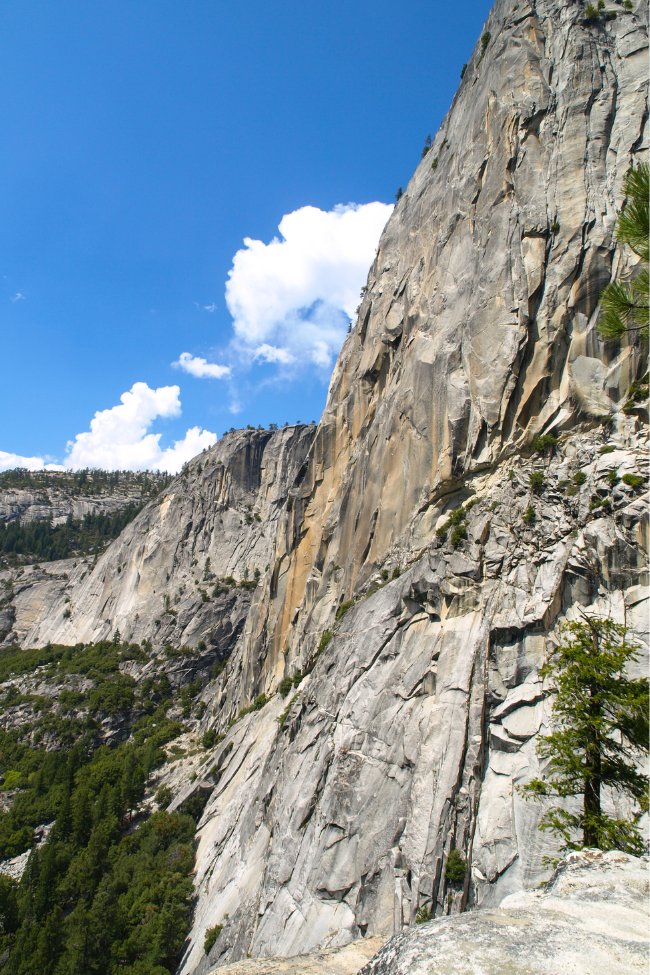
Yosemite has world-renowned climbing destinations like El Capitan for experienced climbers as well as beginner-friendly rock climbing areas like Ranger Rock.
You can also take rock climbing lessons here through the Yosemite Mountaineering School & Guide Service.
7. Go Rafting on the Merced River
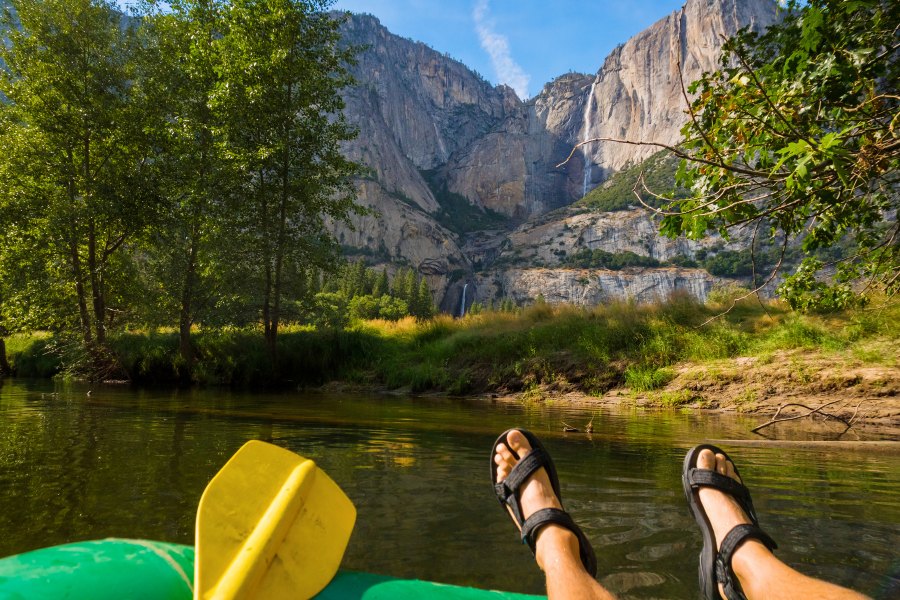
A leisurely rafting experience with beautiful views during the rafting season (varies year to year) but is normally around mid-May to early September.
You’ll be able to see iconic sights like Half-dome, Yosemite Falls and Sentinel Rock.
Your trip will include a 3-mile float down the Merced River in a raft that holds 2-4 people.
8. Stop at Tunnel View and just stare, then take a photo.
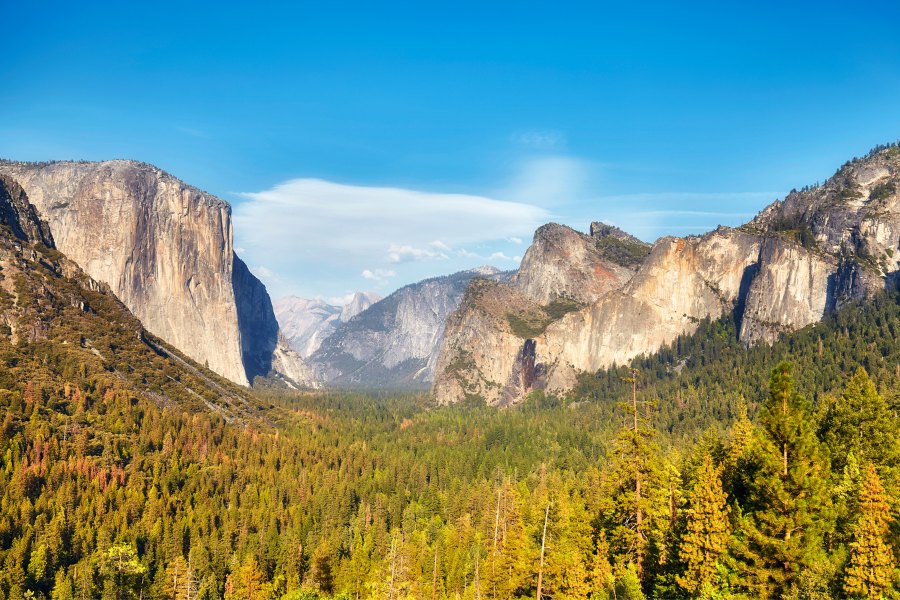
Tunnel View is the iconic viewpoint that lets you see some of Yosemite’s famous landmarks all at the same time.
From this spot you can see:
- Yosemite Valley
- El Capitan
- Sentinel Rock
- Cathedral Rocks
- Half Dome
- Bridalveil Fall
It’s on Wawona Road just before Wawona Tunnel.
9. Hike to Glacier Point
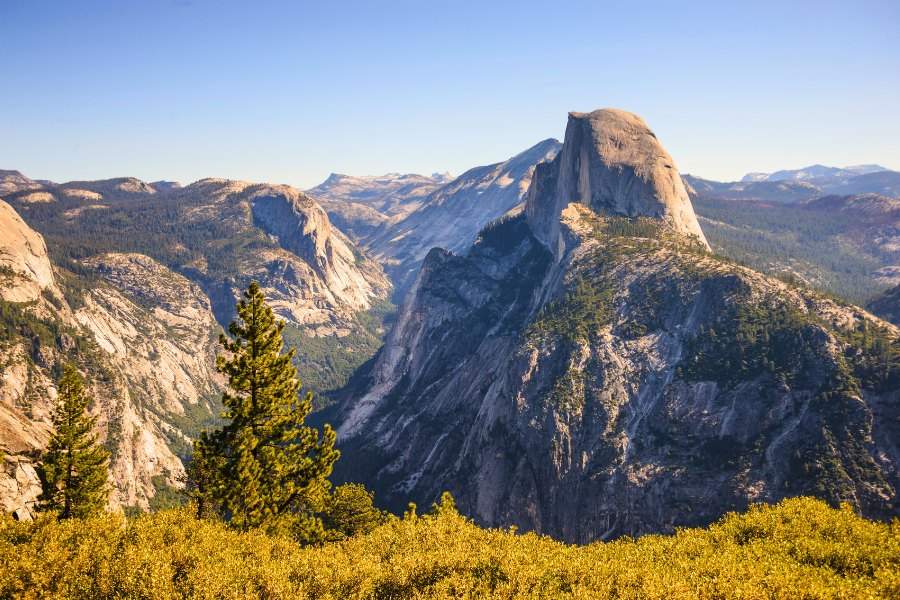
Glacier Point is another stunning viewpoint and you can get here by car (from approximately late May through October or November).
You get breathtaking views of the valley like the one in the picture below.
10. Stargazing
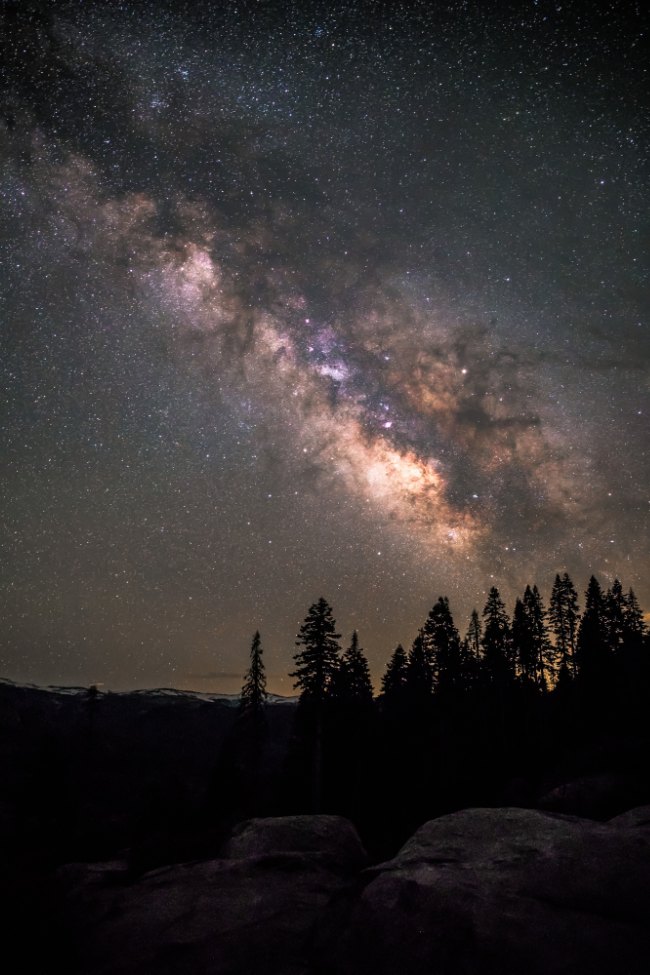
Clear skies offer fantastic opportunities for viewing stars and constellations in Yosemite.
It’s actually one of the best places for stargazing in California with Glacier point in particular being a highlight.
We have a section specifically for stargazing later in this post.
11. Ice Skate in Curry Village
Enjoy ice skating in winter with a magical view of Half Dome in the background.
Since 1928, visitors have enjoyed this family-friendly outdoor ice rink and it’s normally open from late November to early March.
12. Backpack in the Wilderness
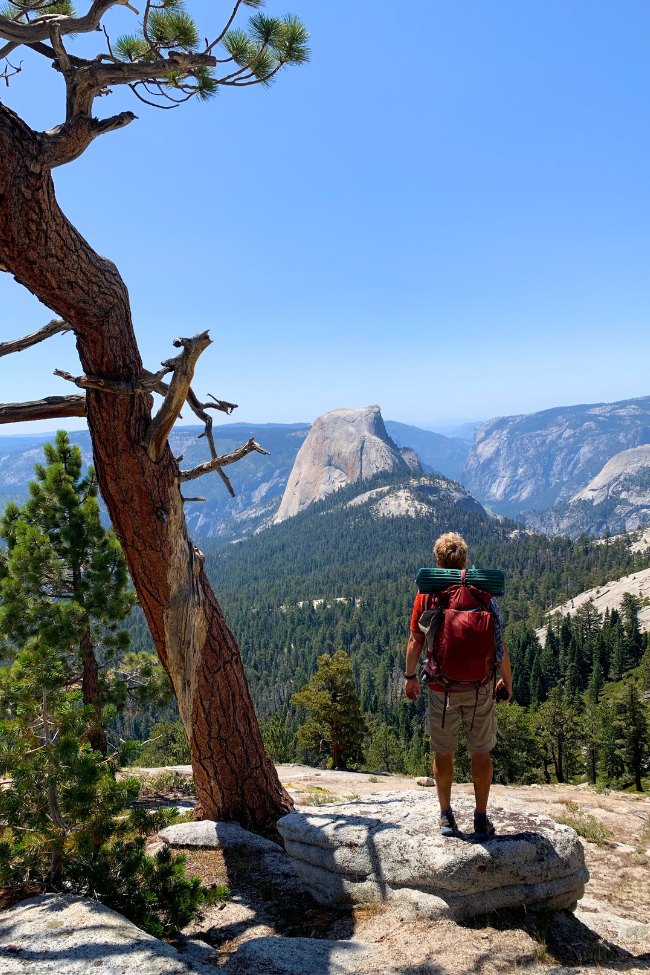
For those of you who really like to explore nature there’s no better way than to do this.
You can explore Yosemite’s backcountry but you will need a wilderness permit.
13. Picnic, Swim, Canoe at Tenaya Lake
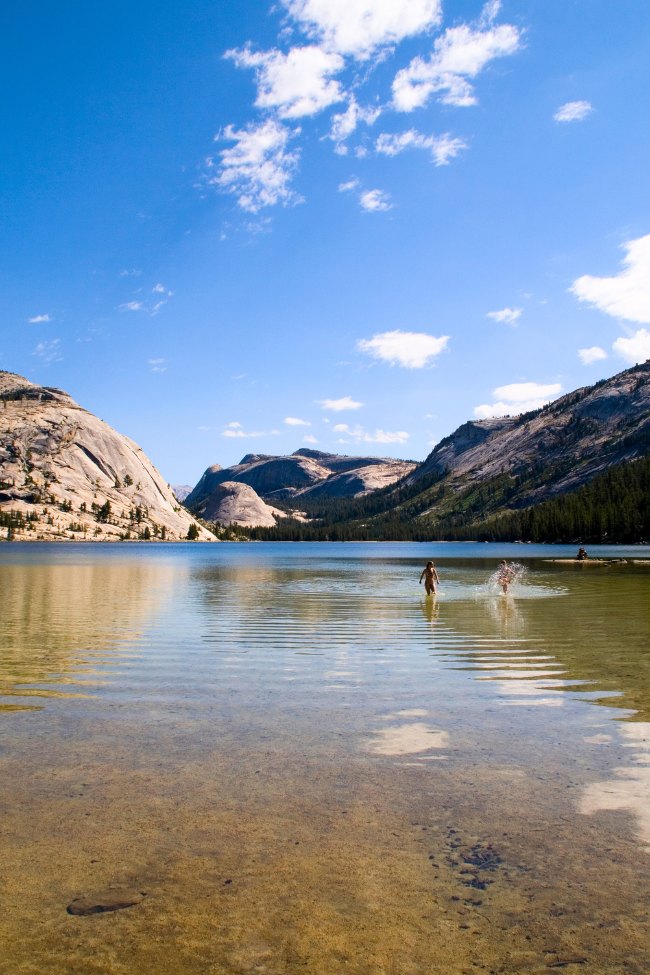
Relax by this serene high alpine lake, known as the jewel of the high country.
It is quite popular for picnicking, swimming, and canoeing and it’s pretty easy to get to.
It’s just off Tioga Road just under 7 miles (11 km) west of Tuolumne Meadows.
14. Explore the Hetch Hetchy Reservoir
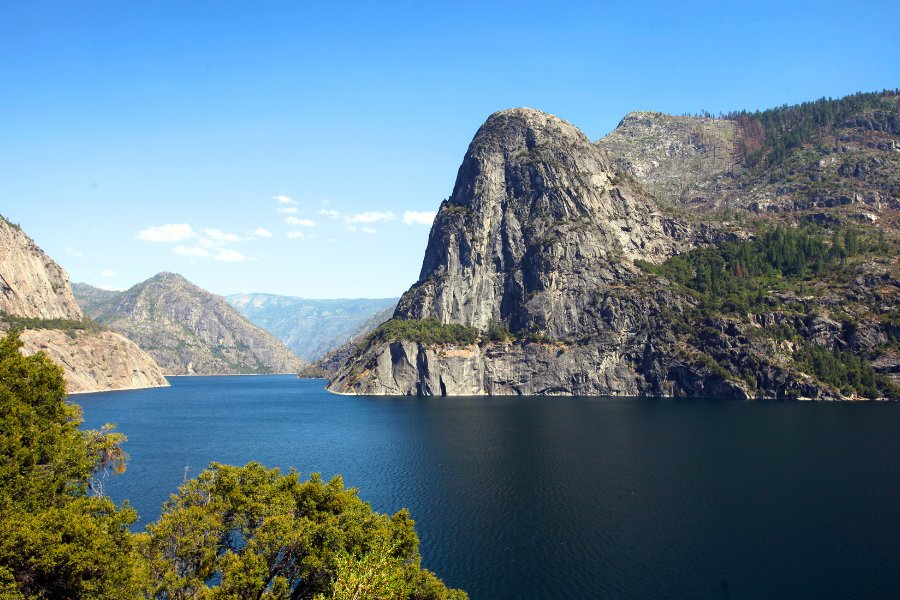
This is off the beaten track a little bit but this also means it’s less crowded compared to other parts of Yosemite.
Hetch Hetchy is located 38 miles (61 km), or about 1 hour and 15 minutes from Yosemite Valley.
The Hetch Hetchy Road begins just outside of the park on Highway 120, near the Big Oak Flat Entrance Station.
Popular activities here include, fishing, birdwatching and day hikes.
You can also see the stunning Wapama Falls and Tueeulala Falls.
15. Go Fishing For Rainbow Trout (and more)
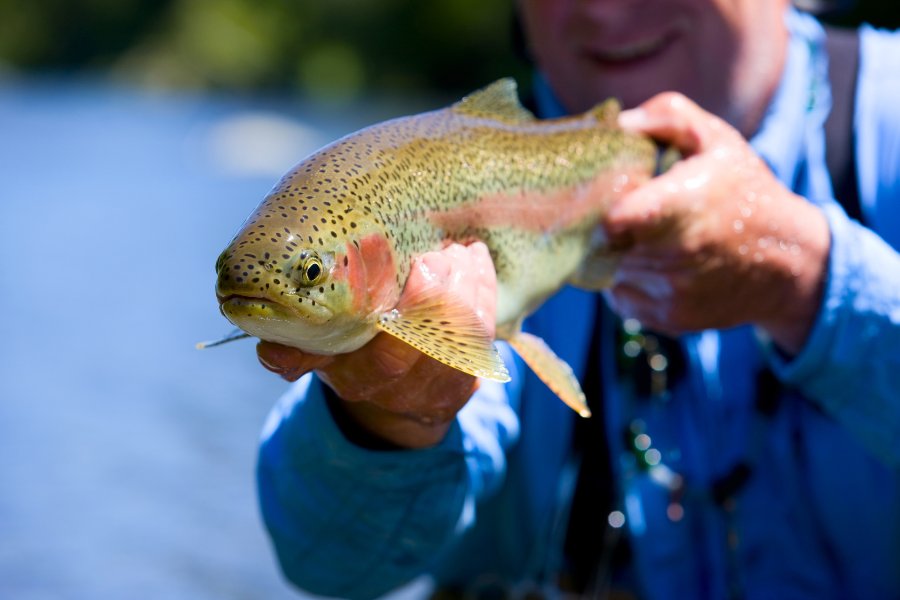
Fish for rainbow trout amongst other fish in the park’s streams, rivers, and lakes (with proper permits).
Yosemite waters are generally open all year for fishing with some limitations.
16. Bird Watching
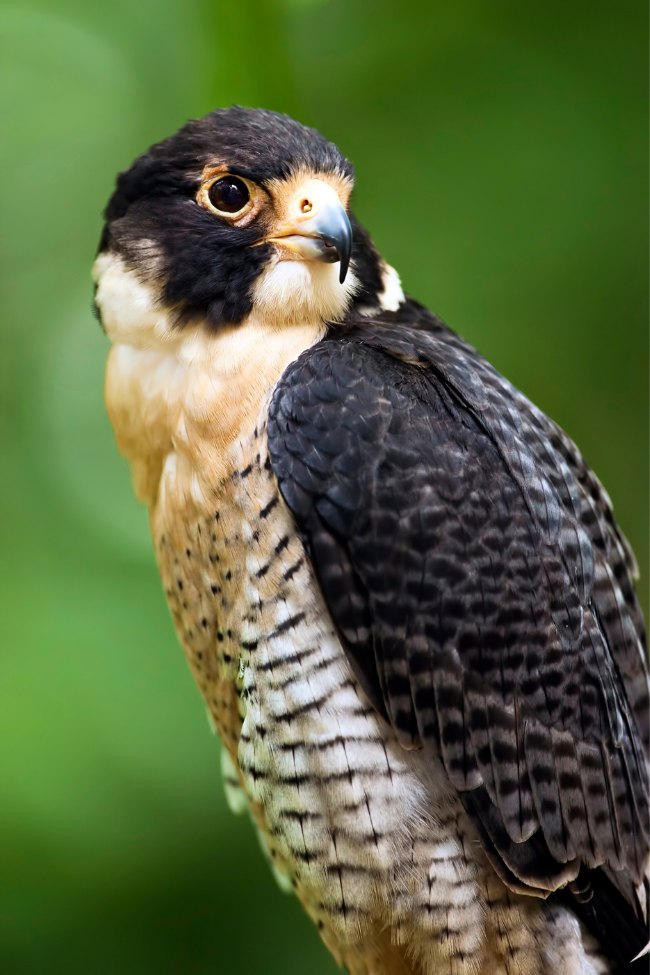
Over 250 bird species make Yosemite a great place for birding.
Some regulars include:
- Steller’s jay
- American robin
- Acorn woodpecker
- Common raven
- Mountain Chickadee
Some rarer birds include:
- Great Gray Owl
- Spotted Owl
- Peregrine Falcon
- Pileated Woodpecker
- Northern Goshawk.
17. Enjoy a Horseback Riding Tour

Explore trails on horseback with guided tours.
Wawona Stable offers a two-hour ride on mules and horses.
No riding experience is necessary, though some rides require riders to be in good physical condition
You can also join a horseback trail ride run by Yosemite Trails Horseback Adventures.
18. Snowshoeing and Cross-Country Skiing
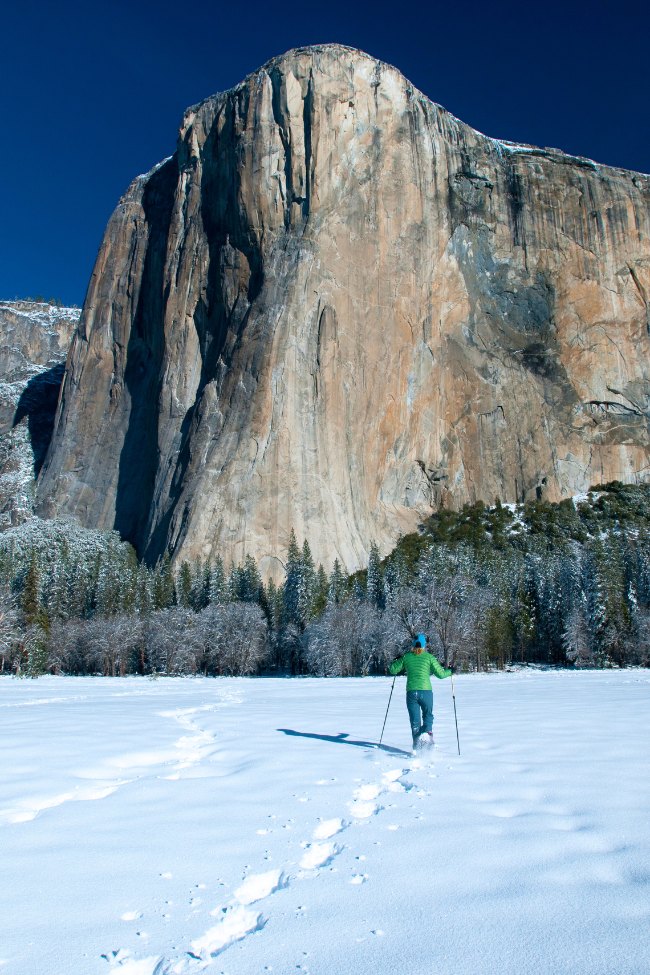
This isn’t for everyone but if you’re not afraid of the cold, then you’re going to love it.
Winter transforms Yosemite into a snowy wonderland for these activities and the crowds of summer are gone.
19. Visit the Yosemite Museum
Discover the cultural history of Yosemite Valley and the Ahwahneechee people by taking some time to visit the Yosemite Museum.
It’s very easy to get to as it’s in the Yosemite Village area.
20. Hike to Sentinel Dome
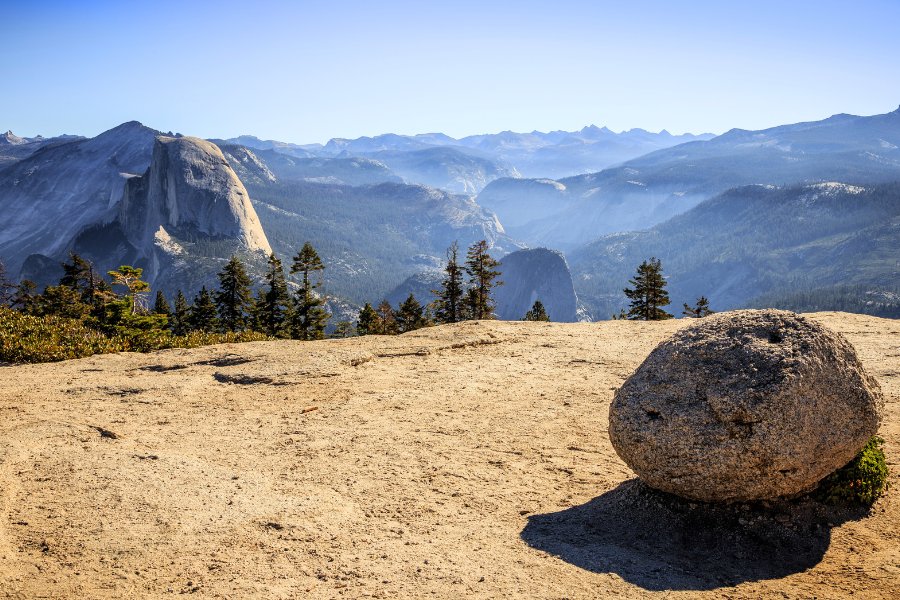
This hike is around 1.8 miles (2.9km) round trip taking around 2 hours.
It’s 3,500 feet above Yosemite Valley and offers one of the best 360-degree views of the park.
You’ll be able to see:
- Yosemite Valley
- Merced River Canyon
- El Capitan
- Yosemite Falls
- Nevada Fall
- Half Dome
- Clouds Rest
- Mt Diablo (if you’re lucky)
And you’ll also see the infamous dead Jeffrey Pine tree on the summit.
21. Swim in the Merced River
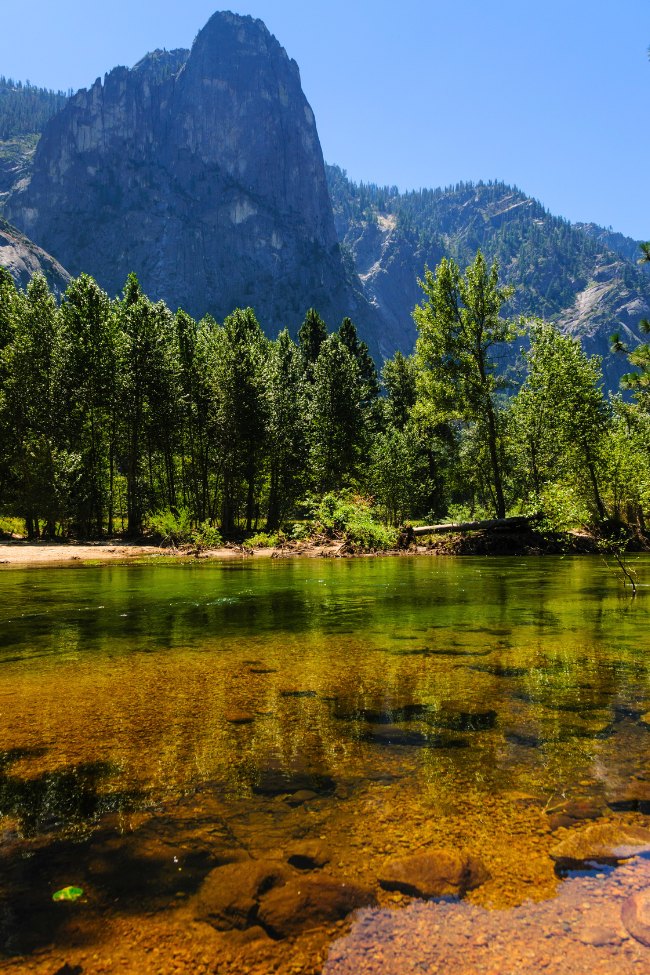
A refreshing summer activity with several swimming spots available.
It’s a great way to cool off in the summer heat but remember to be aware of hazards too.
Also, you should only enter and exit on sandy beaches along the river to help protect the river.
22. Explore the Tuolumne Meadows
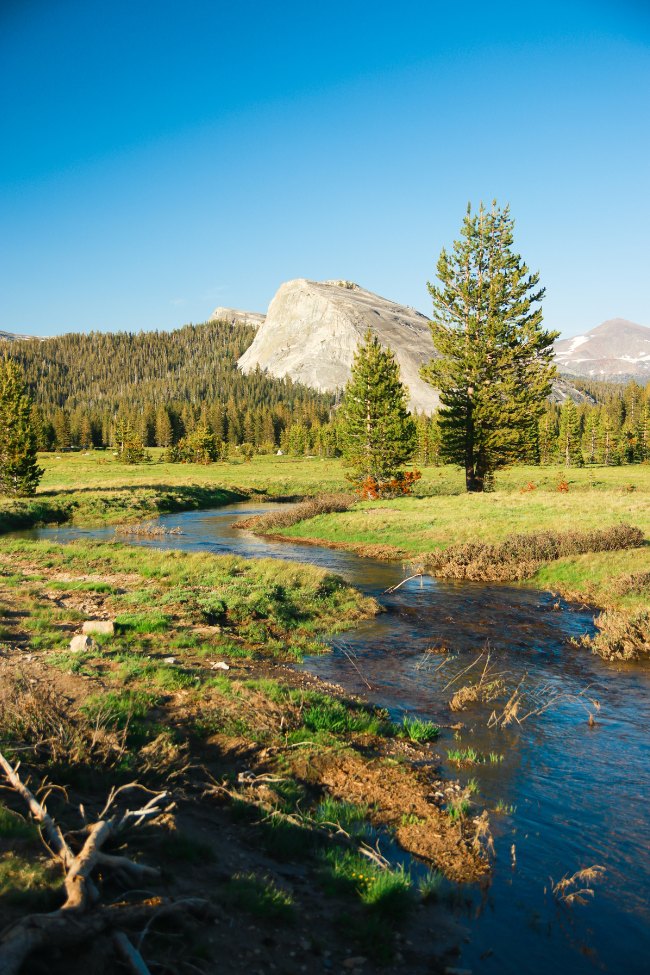
Tuolumne Meadows is one of the largest high-elevation meadows in the Sierra Nevada at an altitude of 8,600 feet.
But it’s also very accessible as it’s on Tioga Road which is open from around May/June to October/November.
You’ll be able to walk along the Tuolumne River flowing through the meadows while you see the peaks of the Sierra Nevada in the distance.
It’s also suitable for most people who want a leisurely stroll since it’s only 2 miles (3.2 km) long and fairly flat.
However, if you want more of a hike you can take one of the longer hikes in the area like Cathedral Lakes, Elizabeth Lake or Lembert Dome.
23. Attend the Firefall at Horsetail Fall
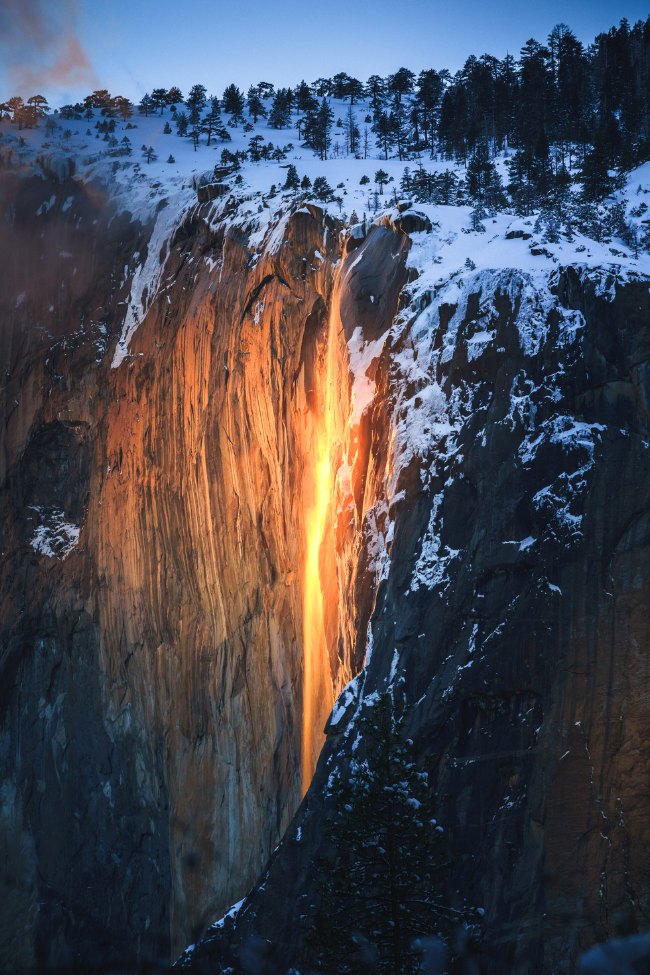
Horsetail Fall flows over the eastern edge of El Capitan in Yosemite Valley.
But under the right circumstances, it takes on the name of Firefall because it glows bright orange.
This is a natural phenomenon that occurs in February under the right conditions.
You can see it in mid to late February when the Sun is positioned correctly to be able to see it.
But you’ll also need:
- Clear skies in the park
- Enough snowmelt on the day to make sure there’s enough water flowing by sunset time.
A good spot to see it from is the El Capitan Picnic Area.
24. Biking Around Yosemite Valley
12 miles of paved bike paths offer a leisurely way to see the sights and take in nature.
And you don’t even have to bring your own as you can rent a bicycle in Curry Village, Yosemite Village, and Yosemite Valley Lodge.
This is especially good in the summer if you want to feel the breeze while you bike around.
25. Relax at the Ahwahnee Hotel
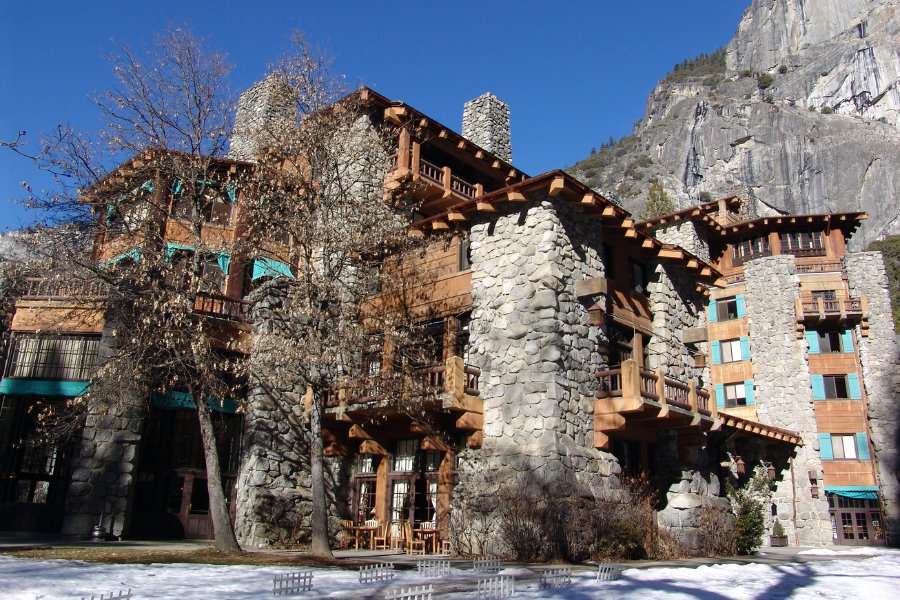
The Ahwahnee was designed and built in the 1920s for an upmarket clientele.
It’s hosted presidents and queens but you can stay there too.
One of the best things about the hotel is the location and the views you can get as it’s pretty close to places like Yosemite Falls, Half Dome and Glacier Point.
26. See Bridalveil Fall
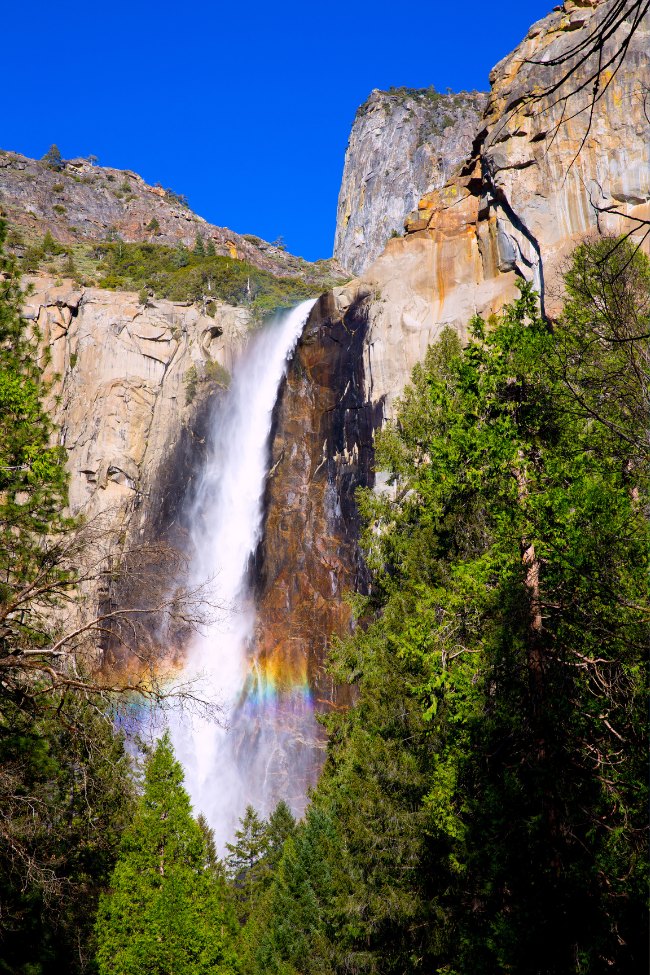
Take the short and easy Bridalveil Fall Trail which will lead you to the 620-foot (189 meters) Bridalveil Fall.
This trail is good for those with dogs because leashed pets are allowed.
The best time to see it roaring with water is in Spring and it’s one of the most popular sights in Yosemite.
You know what’s crazy?
These 26 things to do still don’t cover everything there is to do in Yosemite.
There are still things like the famous Mirror Lake, the Ansel Adams Gallery and more!
But hopefully this list gives you a good enough starting point for your first trip!
Let’s get into some more specific info now.
Best Time To Go
The best time to visit Yosemite National Park largely depends on what you want to experience.
If you’re just worried about rainfall in Yosemite Valley then know that the months from June through September are the driest with less than 1 inch of rainfall in any given month.
On the other hand, the wettest months are December through March with average rainfall over 4 inches in any given month.
Here are a few pointers for each season.
Spring (March to May):
Ideal for waterfall enthusiasts, as the snowmelt swells Yosemite’s waterfalls to their most spectacular levels.
However, some higher elevation areas may still be snowbound.
Summer (June to August):
Offers warm weather and full access to the park’s high country, including Tuolumne Meadows and the High Sierra.
It’s also the most crowded time, so booking accommodations and campgrounds well in advance is recommended.
Fall (September to November):
Fewer crowds and beautiful autumn colors make this a great time to visit, with most park areas still accessible before the first snowfall.
Winter (December to February):
Transforms Yosemite into a snowy wonderland, ideal for snow sports at Badger Pass Ski Area.
Road closures limit access to some parts of the park, but the valley remains open.
If you like snowshoeing or cross-country skiing then this is a perfect time to visit.
More information:
How Many Days Should I Spend?
Deciding how many days to spend in Yosemite depends on what you want to see and do.
For a well-rounded visit, spending at least 3 days in Yosemite is recommended.
This allows for a thorough exploration of Yosemite Valley, Glacier Point, and perhaps even Tioga Pass.
With 3 days, you can focus on the valley and Glacier Point, ensuring you catch the stunning sunrise at Glacier Point and have time to hike trails like Taft Point.
You’ll also have a bit of time to enjoy the Merced River.
Extending your stay to 4 days opens up the possibility to include a hike to Half Dome (permits required), explore the Yosemite Valley Scenic Route more leisurely.
You’ll also be able to visit places further afield like Tuolumne Meadows or the Mariposa Grove of Giant Sequoias.
Getting Around
Getting around Yosemite National Park offers several options, ensuring visitors can navigate the park’s vastness with ease.
Driving is a popular choice, but note that some roads close seasonally from around November through May/June, and tire chains may be required during the colder months.
For those preferring not to drive or seeking alternative transportation methods, the park provides comprehensive public transportation services.
Yosemite’s free shuttle system is especially convenient for getting around Yosemite Valley, with buses running frequently to major sights, lodges, campgrounds, and trailheads.
In addition, services like the Mariposa Grove Shuttle, the Badger Pass Ski Area shuttle in winter, and the Glacier Point Tour offer specific seasonal access to some of Yosemite’s iconic locations.
Public bus services from nearby communities into Yosemite Valley are available all year, with the Yosemite Area Regional Transportation System (YARTS) connecting the park with several California cities.
This network significantly eases access to the park and helps reduce traffic congestion within Yosemite.
More info:
Guided Tours in Yosemite
Yosemite National Park offers a variety of guided tours to enhance your visit, catering to different interests and allowing you to explore the park’s natural beauty, wildlife, and historical sites with knowledgeable guides.
These tours range from easy walks and valley floor tours to more adventurous outings like backcountry hikes and rock climbing adventures.
Here are some of them…
Yosemite Valley Discovery Walk:
This tour lets you see iconic places in Yosemite Valley including Yosemite Falls, Tunnel View, Bridalveil Falls, Half Dome and El Capitan.
Valley Floor Tour:
A 2-hour tram tour providing a comprehensive overview of Yosemite Valley’s landmarks and history.
It’s a perfect introduction for first-time visitors.
Glacier Point Tour:
Offers breathtaking views of Yosemite Valley, Half Dome, and Yosemite’s high country.
The tour is especially popular at sunset.
- Guided bus tours in Yosemite (scroll down to see Glacier Point tour details)
Stargazing Tours
During the summer months, ranger-led and special astronomy programs are offered, allowing visitors to explore the night sky above Yosemite.
Reservations and Permits
Yosemite National Park requires reservations for entering the park during certain times and for specific events.
For instance, in 2024, day-use reservations are needed for the Horsetail Fall event in February and during peak visitation periods from April through October.
These reservations help manage the number of visitors, making your experience more enjoyable and preserving the park’s natural beauty.
For camping within Yosemite, advance reservations are highly recommended, especially for popular campgrounds like Camp 4, Hodgdon Meadow, and Wawona, which are available through Recreation.gov.
These spots can be booked five months in advance and tend to fill up quickly due to high demand.
Special permits are required for activities such as overnight wilderness hikes and climbing Half Dome.
These are crucial for ensuring safety and minimizing environmental impact on trails and natural sites.
To secure your entrance, lodging, or activity permits, start by visiting Recreation.gov and the official Yosemite National Park website.
Planning ahead and booking early is key to a successful visit to Yosemite.
Getting There
Yosemite National Park, nestled in the Sierra Nevada of California, is accessible by car, bus, or plane, offering a journey as scenic as the destination itself.
By Car
Driving is the most flexible way to reach Yosemite, with several routes available:
- From San Francisco or Sacramento, take Highway 120 for the northern entrances or Highway 140 for a route through Mariposa.
These routes are open year-round, offering spectacular views. - From Los Angeles, Highway 41 leads to the southern entrance, passing through Fresno.
Remember, Tioga Pass (Highway 120 East) and Glacier Point Road have seasonal closures due to snow.
Always check current road conditions, especially in winter, as tire chains may be required.
Public Transportation
For those preferring not to drive, the Yosemite Area Regional Transportation System (YARTS) provides bus service to Yosemite from various locations, including connections from AMTRAK stations.
This makes it possible to travel to Yosemite from major cities in California without a car.
YARTS offers a convenient and eco-friendly way to enjoy the park, with added discounts at select Yosemite venues for passengers.
By Air
Nearby airports like Fresno/Yosemite International and San Francisco International offer the closest commercial flights.
From these airports, you can rent a car or use public transportation to reach the park.
Seasonal routes from Mammoth Lakes, Las Vegas, and Reno airports are available when Tioga Road is open.
Regardless of how you choose to travel, planning ahead is crucial, especially during peak seasons when the park sees the highest visitor traffic.
Utilizing public transportation like YARTS can enhance your experience by allowing you to relax and enjoy the stunning landscapes without the stress of driving and parking.
For more detailed directions, public transportation options, and airport information, visit Yosemite’s official travel information pages on TravelYosemite.com, NPS.gov, and Yosemite.com
Where To Stay
For those planning a visit to Yosemite National Park, there are a variety of accommodation options to suit every preference, from luxurious hotels to rustic tent cabins.
Inside the park, you can find lodging managed by Yosemite Hospitality, offering a range from the upscale Ahwahnee with its fine dining and grand architecture, to the more modest but equally charming canvas tent cabins at Curry Village.
The Wawona Hotel offers a historic Victorian setting near the Mariposa Grove of Giant Sequoias, and the Yosemite Valley Lodge is near the base of Yosemite Falls, providing easy access to the park’s most popular destinations.
These options are available year-round or seasonally.
Reservations are generally available 366 days in advance and trust me you should reserve early.
Yosemite is extremely popular from spring to fall and during holidays and you don’t want to plan your perfect trip only to realize you can’t get accommodation.
For those seeking a more unique experience, High Sierra Camps provide lodging and dining in the wilderness, accessible via hiking, and reservations for these are obtained through a lottery system.
Additionally, Housekeeping Camp offers a laid-back, open-air lodging experience on the banks of the Merced River.
If you prefer staying outside the park, numerous private lodging options are available in neighboring communities, but we wouldn’t recommend it because Yosemite is so big.
If you stay outside of the park then you’re going to be spending more time driving in and out every day and less time exploring.
More information:
Camping
Yosemite offers a range of camping options, from RV and trailer sites to tent campsites and group camping areas.
Reservations are a must from April through October due to high demand.
Outside of these months, some campgrounds operate on a first-come, first-served basis, but availability can be limited, especially on weekends and holidays.
For RVs, note that there are no hookups available in the park, though dump stations are accessible.
The campgrounds provide varying amenities, including restrooms with flush toilets and tap water.
More information:
What To Wear
The weather in Yosemite can vary greatly depending on the season.
Summers are warm with highs in the eighties, while winters can see highs only in the forties.
Rain is common from November to March, and snow can occur from October to May.
Given these conditions, dressing in layers is advisable so you can adjust to the changing temperatures.
Ensure to include waterproof gear if visiting during the rainy months and warm, insulated clothing for winter visits.
Always have sturdy hiking shoes, especially if you plan to explore the park’s trails.
More information:
Where To Eat & Drink
Yosemite National Park offers a variety of dining options ranging from casual cafes to fine dining experiences in its majestic lodges.
The Ahwahnee Dining Room provides a more upscale dining experience with stunning views, while Yosemite Valley Lodge and Curry Village offer more casual dining atmospheres.
There are also numerous picnic areas throughout the park if you prefer to bring your own food.
Remember, when dining or picnicking in the park, always store your food properly to avoid attracting wildlife.
Hikes
Yosemite offers a range of hikes suitable for all abilities, from easy strolls to challenging climbs.
Remember, the best hike for you depends on your interest, fitness level, and how much time you have in the park.
Always check current trail conditions and any permit requirements before heading out.
Lower Yosemite Falls Trail:
An easy and family-friendly walk that offers a spectacular view of one of Yosemite’s most famous waterfalls.
It’s perfect for a short nature walk.
Mist Trail to Vernal and Nevada Falls:
This trail offers more of a challenge and rewards hikers with close-up views of two stunning waterfalls.
The hike can be extended to include a portion of the John Muir Trail, offering different views and a loop back to the valley.
Upper Yosemite Falls Trail:
A strenuous hike that takes you to the top of North America’s tallest waterfall, offering breathtaking views of the valley.
Half Dome:
For the ultimate Yosemite hike (permit required), the trek to Half Dome is unforgettable.
It’s a strenuous full-day hike, culminating in the iconic cable-assisted final climb to the summit.
Sentinel Dome:
This hike is around 1.8 miles (2.9km) round trip taking around 2 hours.
It’s 3,500 feet above Yosemite Valley and offers one of the best 360-degree views of the park.
And you’ll also see the infamous dead Jeffrey Pine tree on the sum
Tuolumne Meadows (various):
Tuolumne Meadows is a beautiful area that’s perfect for all skill levels.
You can walk along the largely flat meadows or choose to do one of the more strenuous hikes in the area.
For more information on hikes in Yosemite see the following:
Stargazing in Yosemite
Yosemite National Park offers some of the darkest skies in the country, making it a prime location for stargazing.
Glacier Point is highly recommended for its clear night sky views during the summer.
Here, you can see constellations, planets, and the Milky Way with or without a telescope.
In June, July, and August, amateur astronomers often set up telescopes at Glacier Point on Saturdays,
There are also astronomy walks or talks in Yosemite Valley, Tuolumne Meadows, and Wawona as well.
Other excellent stargazing spots include:
- Mariposa Grove, where the moonlight filters through ancient sequoias
- Yosemite Valley for its iconic silhouettes of Half Dome and El Capitan against the night sky
- Olmsted Point along Tioga Road for its expansive sky views
- Sentinel Dome and Lembert Dome also provide breathtaking panoramic views of the night sky.
Related Reading: Best Stargazing Locations in California
Fishing in Yosemite
Fishing in Yosemite is a popular activity, with many streams, rivers, and lakes stocked with fish.
While specific guidelines and seasons apply, Yosemite offers ample opportunities for anglers to enjoy the tranquility of fishing in a natural setting.
Remember, a valid California fishing license is required for anyone 16 years and older.
Some of the native fish species include:
- Rainbow Trout (Lower Elevations)
- California Roach
- Sacramento Pikeminnow
- Hardhead
- Sacramento Sucker
- Riffle Sculpin
Non-native species include:
- Rainbow Trout (Higher Elevations)
- Bluegill
- Smallmouth Bass
- Brook Trout
- Brown Trout
- Lahontan Cutthroat Trout
- Golden Trout
- Rainbow Trout
- Rainbow-Golden Hybrid Trout
- Rainbow-Lahontan Cutthroat Hybrid Trout
More information:
Climbing in Yosemite
Yosemite is a world-renowned destination for rock climbers, offering challenging climbs like the iconic El Capitan and Half Dome.
The park caters to climbers of all levels, from beginners to experts.
Various climbing schools and guided tours are available, providing a safe and educational way to enjoy this exhilarating sport.
Always check for the latest climbing guidelines and permit requirements before planning your adventure.
More information:
Other Useful Links ✅
For further planning and information about Yosemite National Park, the following resources are invaluable:
- Official Yosemite National Park Website (NPS) – The primary source for park information, including alerts, conditions, permits, and educational resources.
- Yosemite Guide – Check the most recent volume of the guide to see what special events are happening. You should get one of these when you enter the park.
- Yosemite Conservancy – Offers detailed information on how to support and volunteer in Yosemite, as well as educational programs and guided tours.
- Recreation.gov – Essential for making reservations for camping, lodging, and some of the park’s guided tours and special programs.
- Yosemite Mariposa County Tourism Bureau – Provides travel tips, lodging options, and itineraries for visiting Yosemite National Park.
- Travel Yosemite – Information on everything to do with visiting Yosemite.
These resources offer comprehensive information to help plan your visit, from day trips to extended stays, ensuring a memorable and well-informed Yosemite experience.

